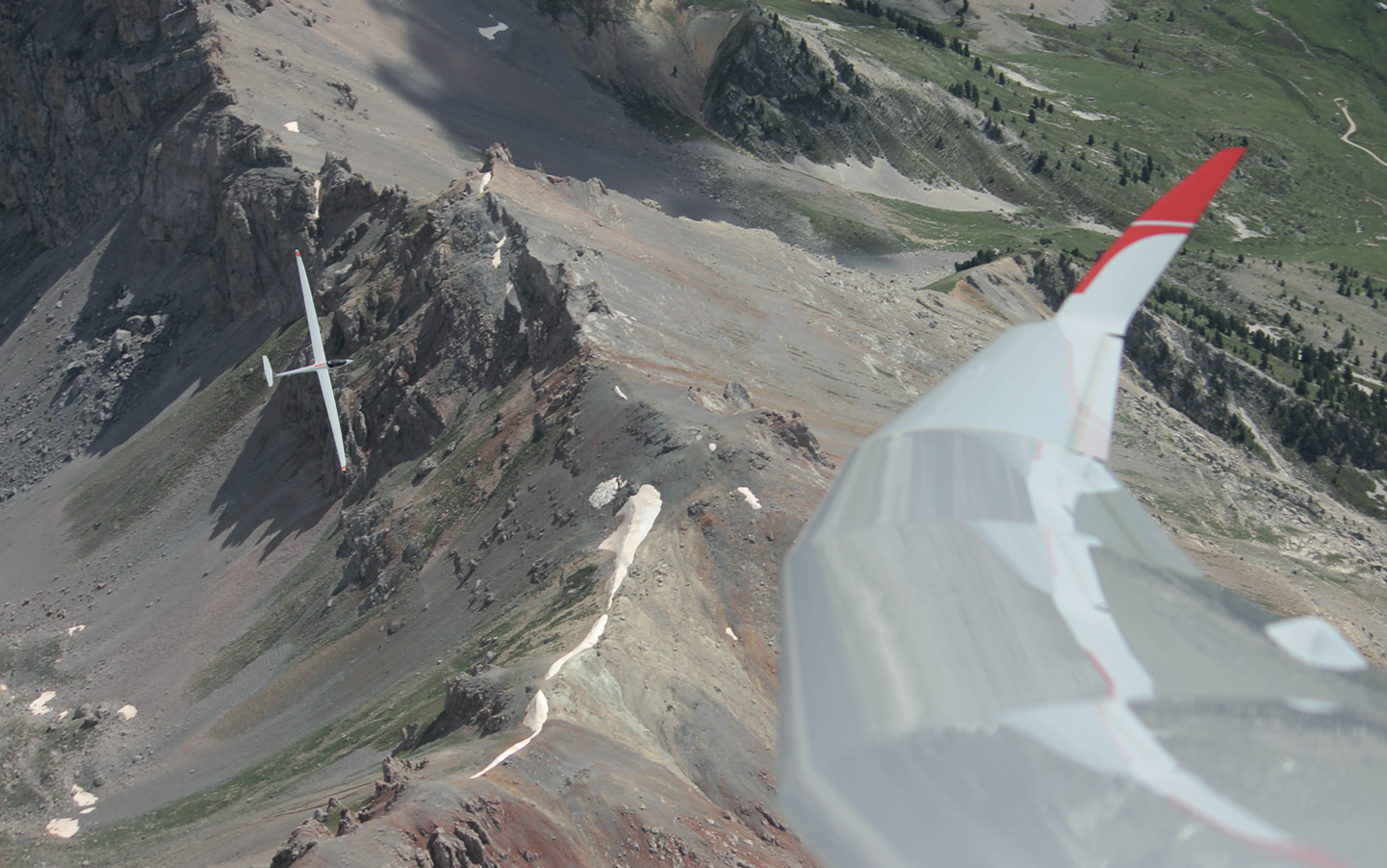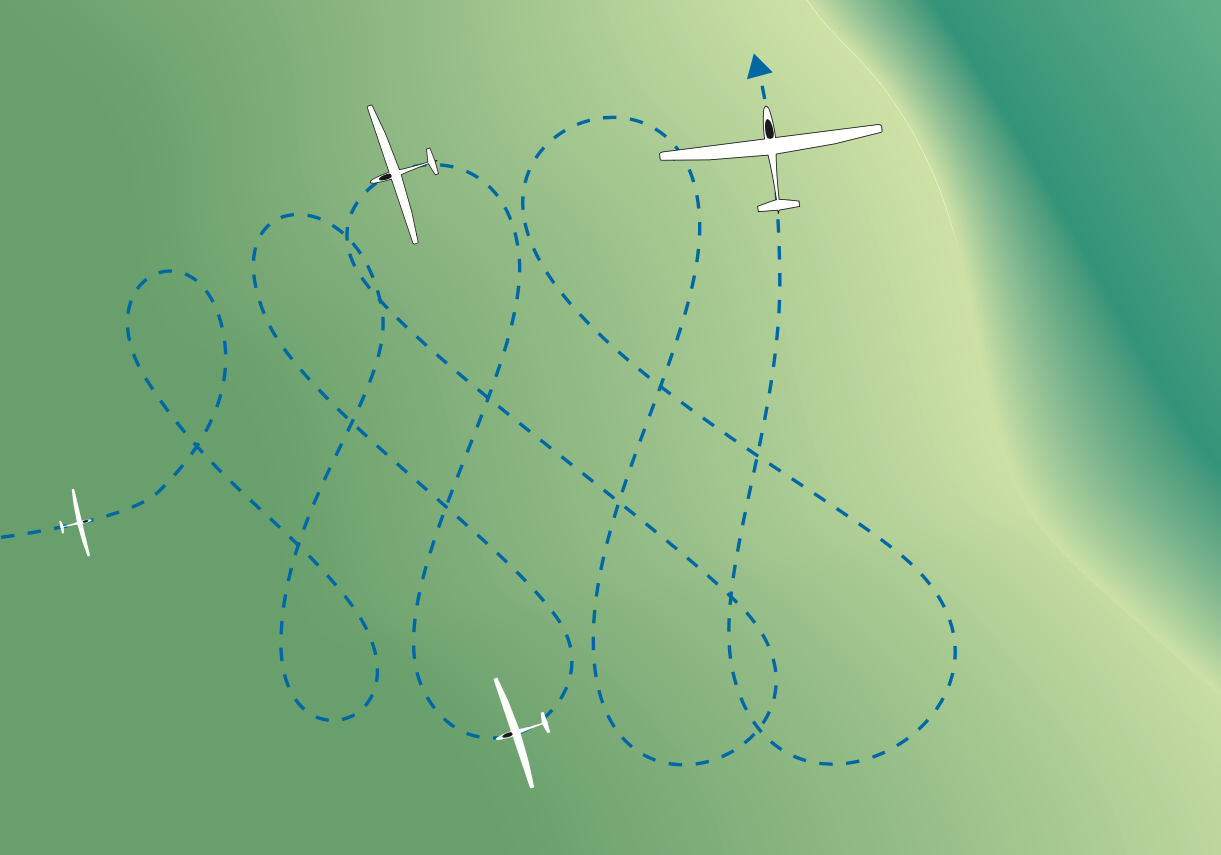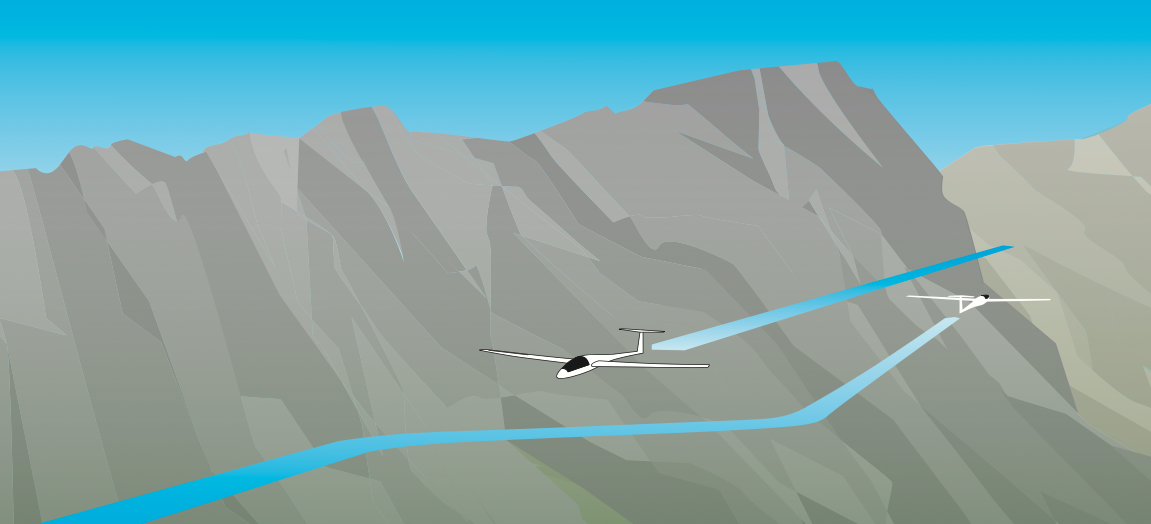4. LESSON 27 - RIDGE LIFT AND MOUNTAIN WAVE
- Keep a good lookout for other gliders, paragliders and cables
- Always have an escape route ready
- Maintain a safe airspeed at all times
- Remember that the glider with the ridge on the right has priority
- Overtake with caution, bearing in mind other gliders can suddenly change direction
- Approach the ridge at a shallow angle, not head on
- Make all turns away from the ridge
It’s great to fly in the hills and mountains. The view is often breathtaking! Although some trainees enjoy them as a routine part of their basic training, many pilots will not encounter ridges or mountains until they are more advanced. This chapter will cover only the basics for flying along ridges. For example, it’s much harder to judge where your horizon is when you are flying along a ridge. Because of the upsloping terrain it may look as if the horizon is moving up in the canopy, while your pitch attitude remains the same. Avoid pulling back on the stick when this happens, because this reduces the airspeed when you need it most. You must monitor the airspeed indicator. Traffic-wise, it can be very busy along a ridge. So look outside as much as possible and pay close attention to other gliders, aircraft, paragliders, electricity cables, zip lines and so forth.
Finally, remember that other traffic may be very hard to see when the sun is low or there is snow on the ground or a lot of cloud. Weather conditions can change rapidly in mountainous terrain. Be aware of poor visibility and severe turbulence.
You will not be ready to fly along ridges safely after one short briefing. Keep a lot of distance from others while you familiarise yourself. Do not push your limits without the guidance of an experienced instructor.
RIDGE LIFT (1)
Ridge lift starts with wind that is being deflected by a ridge. As you know, glider pilots can use upward moving air to climb or to gain extra energy and increase airspeed, so they can fly long distances along the ridge. The air on the lee side of the ridge sinks. If the wind direction changes, the airflow around the ridge changes. Valleys can act like channels between higher mountain ranges and very often the wind direction in a valley will change during the day. Also, the wind direction at a low height can be completely different from the wind direction higher up. So a mountain ridge that was perfect for flying in the morning can be challenging in the afternoon.
WAVE LIFT (2)
Wave lift (also called mountain wave or lee wave) is very different from ridge lift. It occurs on the downwind or lee side of a ridge and we can use this kind of lift to reach incredible altitudes. The formation of mountain wave has to do with gravity and the elasticity of the air, but also with suitable ridge shape, the right wind strength and temperature. Finding the mountain wave is not always easy.
A big difference between wave and thermal lift is that wave lift feels much smoother.
ESCAPE ROUTE AND AIRSPEED
When flying along a ridge you always need to have an escape route ready at the back of your mind.
Never enter a narrow valley without being 100% certain that you can also get out again. Remember that you will need additional airspeed to keep the flight controls responsive and to account for sudden sink, thermals or turbulence. Also bear in mind that, after rain, sloping terrain dries quicker than the surrounding flat land . If the sun comes out and heats these slopes at the right angle, they will warm up quickly and often generate new thermals. Such thermals will cause some very strong drafts (both upwards and downwards) along the ridge.
BASIC RULES OF RIDGE FLYING
If you are approaching a ridge from a distance it’s a good idea to first head straight towards it so you have the best possible view of traffic already on the ridge right or left of you. But you must start your turn to join the ridge in plenty of time, and make your intended track as clear as possible to other gliders already on the ridge. When flying with a tailwind your ground speed is much higher and you might end up closer to the ridge than you wanted. Instead, take a shallow angle to intercept your track along the ridge and take a suitable drift correction to avoid being blown closer to the slope; you will need to fly crabwise along the ridge.
Keep a really good lookout! All the turns you make need to be away from the ridge until you are well above the crest! If conditions force you to circle in order to climb; make figure-8 turns. Never turn in the direction of the mountain because this is extremely dangerous. Fly coordinated turns and pay special attention to your attitude and your airspeed.
The illustrations above show two gliders approaching each other at the same altitude: the glider with the ridge on its right-hand side has priority. For him or her it is impossible to turn right to avoid a collision. The other glider (having the ridge on its left-hand side) must alter course to the right.
Overtaking another glider should be done with caution, bearing in mind the other glider could suddenly change direction. It is often better to simply turn back instead of overtaking. Pay a lot of attention before, during and after overtaking, because the other glider has priority.







